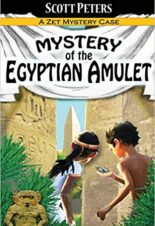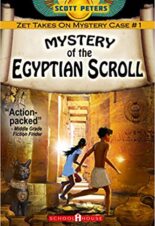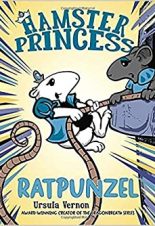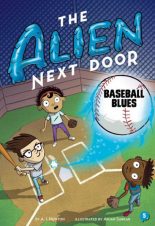
Buy This Book
Ramses thinks, “So this is how a person looked when he was betraying the people he’d sworn to protect. Like just another person. A son, a brother, a traitor no one really knew. What could make him turn his back on them?” –The Boy Who Could Draw
The Boy Who Could Draw
by Scott Peters
Good for Reluctant Readers
8+
Score
270
Ramses is an orphan with a strange skill. He has a magical talent for drawing. His pictures of the gods are so real that they appear to breathe with life. The sight terrifies Ramses’ evil caretakers, who call him cursed and punish him for his unique powers. But not everyone thinks he’s cursed. When Ramses’ parents were alive, they loved him and called his talent a gift. He doesn’t know who or what to believe anymore. Then, famous craftsmen come looking for an artist to paint the walls of King Tut’s tomb. Ramses longs to win the apprenticeship. If he does, he might just find where he belongs. But if he fails, he’ll never escape his cruel caretakers.
Neferet, the daughter of chief scribes, continually gets into trouble for sneaking out of the Place of Truth, but that doesn’t stop her from exploring the world outside of her village. During her excursions, she meets a vile boy who threatens to curse her community if she doesn’t help him win the apprenticeship. Before the craftsmen see anyone else’s artwork, the boy wins the favor of the city leaders. Can Neferet convince her father not to give the apprentice to the evil boy?
From the very first page, readers are drawn into Ramses’ life in Ancient Egypt, and the compelling story is impossible to put down. After his parents’ deaths, Ramses’ aunt and uncle treat him as a slave. Despite this, Ramses works hard, treats others kindly, and strives to do what is right. When villainous men try to blackmail Ramses, the boy is willing to give up his hopes of winning the apprenticeship in order to stay true to himself. Ramses’ positive character traits make him a likable protagonist worthy of admiration.
The addition of Neferet’s story gives an inside view of the historical Place of Truth, which was isolated from other communities. Neferet’s explorations outside of her village add suspense because she meets both Ramses and another boy, who both want to win the apprenticeship. Using Neferet’s point of view allows readers to understand the conflict that arises when the craftsmen choose the new apprentices. In addition, Neferet’s desire to make her father proud while also quenching her curiosity makes her a relatable character that readers will connect with.
The Boy Who Could Draw has two well-developed protagonists who readers will root for. The fast-paced story also has plenty of action and adventure to engage readers. In addition, the villains are easily recognizable and add conflict to the story. In the end, the villains are justly punished, and the characters who did what is right receive their just reward. The conclusion highlights the importance of doing what is right, even when it is difficult. In the end, Ramses gets the apprenticeship because “he has more than a gift; he is smart. He doesn’t rely on the whim of the gods. He puts a method to work, a reliable method that nothing can foil. [He is] a farmer. . . And farmers are stubborn, determined people.”
The Boy Who Could Draw is ultimately a story about a boy who is trying to find where he belongs. The struggles and misfortunes he endures along the way make for a compelling story. Magic is mixed in with interesting historical facts that allow readers to understand how the Ancient Egyptians lived. The relatable conflicts, likable characters, and realistic villains will appeal to any readers who want to jump into a fast-paced story where good wins against evil. Readers fascinated with Ancient Egypt should also read the TombQuest Series by Michael Northrop and The Curse of King Tut’s Mummy by Kathleen Weidner Zoehfeld.
Sexual Content
- None
Violence
- Ramses’ Aunt Zalika is abusive. When she finds Ramses’ drawing, she “pulled her hand back, raising his drawing stick overhead. Then she brought it down fast. . . The stick slammed into his back. It tore away a layer of skin.” Ramses has “two blazing welts on his back.”
- Aunt Zalika accuses Ramses of trying to hurt her son, Sepi. When Ramses tried to give Sepi water, Aunt Zalika “backhanded him hard. Her rings drew blood. . . She grabbed Sepi’s walking stick. Ramses ducked as she brought it down on his head; it slammed his shoulder. He stumbled sideways as she hit him again.” Ramses runs out of the house.
- When Aunt Zalika finds one of Rames’ drawings, she makes him put his hands on a rock. “Aunt Zalika cracked the whip across his neck. . . Aunt Zalika forced him to kneel and open his hands. . . Then the lash came down and tore away a layer of flesh. He couldn’t breathe; his chest froze in a gasp. Down the lash came again. . . flaying the skin.” A farm worker stops Zalika’s attack. Despite Ramses’ injuries, he is still forced to cut grain with a scythe.
- While Neferet collected plants, a boy “lunged and snared her by the wrist.” He demands information; she “kicked at his shins; he dodged sideways. She tried to wrestle so that they both landed on the scorched earth.” He threatens Neferet and then lets her go.
- Aunt Zalika takes Ramses’ drawing and throws it in the oven. “Swinging the hot poker at Ramses, she caught him in the chest. He fell back, the burnt smell of singed skin filling his nostrils.”
- A man tries to blackmail Ramses. The man’s “fist shot out and slammed Ramses in the jaw. The ground rose up fast. Razored stems broke his fall.”
- One of the blackmailers named Denger ties up Ramses and forces Neferet to walk. “Ramses kicked hard and slammed him in the gut. Muscled as a bull, the man just laughed. . . He crushed [Ramses] to the ground, snaked the rope around Ramses’ neck and wrists, and bound his hands together.” Later, Denger presses a sword “to Ramses’ throat, then slid the blade lightly across the skin.” Denger threatens to kill Ramses.
- Neferet tries to run away from Denger. When she falls, “Denger was on her—he caught her hair in his fist. . . Denger wrenched her head to look at him.”
- Ramses tries to escape Denger, but they fall over a bridge. Denger hits a boulder. “A sickening crunch sounded as the man hit the stone. . . The rope wrenched them both to a halt. . . Denger made a low whine—eerie and frightening.”
- When Denger fell, he fell on his sword. “Buried in the man’s stomach, all the way to the worn leather hilt, was the sentry’s own sword. Worse, it wasn’t a clean cut. The blade had gored him badly, exposing his gut.” The physician tries to save Denger’s life by working “to remove the blade, pulling it carefully from his ruptured belly. They tried to stitch the gore back together. They tried to stop the blood, the oozing blood that poured over everything.” Denger dies.
Drugs and Alcohol
- When Ramses’ father is ill, he is given a “potion.”
- Neferet collects plants that the village physician uses to make medicine. A girl who is jealous of Neferet tampers with the herbs, replacing helpful herbs with a deadly belladonna berry. Luckily, the berry is found before anyone is harmed.
- A woman ordered “two jars of beer.”
- When Ramses goes into a temple, he passes out because he “fell under the spell of drugged incense.”
- Occasionally, the adults drink wine. For example, Rames passes a group of people who “sang as they walked, the litters swinging drunkenly on their shoulders.”
- One of the adults “drank too much beer and dealt with his problems by shouting.”
- When a man is injured, he is given a sleeping draught.
Language
- Ramses’ aunt and uncle call him names including “flea-bitten farm boy,” “little flea,” “grubby little rat,” “scrounge-brains,” and “river scum,” as well as other demeaning names.
- “By the gods” and “flea-dung” are used several times as an exclamation.
- “By the beard of Ptah” is used as an exclamation once.
- When Ramses tries to help a girl who fell into an animal trap, she calls him “jackal-breath!”
- A man calls someone a “lout.”
- A mean girl tells Neferet, “Maybe it’s a good thing your mother died. . . So she didn’t have to see what a pathetic excuse for a daughter you are.” Later, the mean girl calls Neferet “dirt-face.”
Supernatural
- When Ramses draws, the pictures move. For example, when Ramses drew a picture of the god Osiris, “Osiris’s eyes—eyes made of sand—were moving. . . They flicked up to stare at the acacia stick in the boy’s hand. Locking onto it, the god’s eerie sand-eyes studied the simple tool that had drawn his huge form on the riverbank.”
Spiritual Content
- The Greek gods, such as Osiris, the king of the underworld, play a role in the character’s lives.
- When Ramses’ father died, a priest chanted “magic spells over his sick father.” The priest implies that Ramses’ drawing caused Ramses’ father’s illness. The priest said, “What that boy does is unholy. . . He was barely out of swaddling clothes. Yet there he was sketching his dark magic on the ground. No god meant him to have such power.”
- One of the story’s conflicts revolves around Ramses’ ability to draw—is it a curse or a gift?
- After his father dies, Ramses draws Horus, “the god of the sky, whose eyes were the sun and moon. Ramses didn’t know what he’d do if Horus came to life. Demand answers? Ask him if Osiris killed his father as punishment? Was it all Ramses’ fault, like the priest said?”
- Ra, the sun god, is mentioned often, especially when night falls. Ra “would drop below the horizon and begin his nightly voyage through the underworld.”
- Ramses tries to free a bird that is caught in a trap. When the bird dies, Ramses “prayed to Osiris to care for the bird’s everlasting soul.”
- To steal Ramses’ inheritance, his uncle had Ramses’ “birth wiped off the records. . . In one stroke, Uncle Hay had made him no one. Not only in the eyes of humans, but worse, in the eyes of the gods. Without a birth record, when he died, he’d be lost to wander the darkness forever. Unable to rest. Stuck in limbo. The ultimate horror.”
- Ramses draws Ptah, the patron god of craftsmen.
- Someone gives Ramses an amulet that is “a carved figure of Maat, goddess of justice and truth.”
- Several times, Ramses encounters a cobra he believes is Meretseger, “the snake goddess who protected the craftsmen of the Valley of the Kings.”
- When Neferet meets a mean boy, she “prayed fate would not carry him through the village gates and into her life.”
- Needing an isolated place to practice his drawing, Ramses goes to a shrine to Hathor. “Fruits and flowers lay piled at the goddess’s feet, along with a stew pot, strings of beads . . .” Rames thinks, “Hathor wouldn’t demand an offering for passing her shrine, but the gods he planned to visit were a different manner. . . No one in their right mind visited the gods without a gift. There would be a price to pay. There was always a price to pay. . .”
- When Ramses enters a temple, he worries about what will happen. “Elaborate spells, carved into their surface, warned intruders against entering. All of Egypt knew that only priests were allowed to cross the threshold. . . Any prayers or wishes had to be made outside.”
- Ramses draws a picture of Meretseger. When a group of men look at the picture, “Either a breeze was moving the page, or the goddess’s chest was rising and falling of its own accord. . . As if in response, Meretseger’s eyes flashed. . . The figure of the cobra shimmered, bulging up from the page. . . Meretseger was rising, a frightful goddess made of gold.” Some of the men “fell to their knees and covered their faces.”
- When a boy is being disrespectful, he is reminded, “As it says in the sacred texts of the Ke’gemni, ‘comfortable is the seat of the man of gentle speech—but knives are prepared against the one that forces a path, that he does not advance, save in due season.’”
- When a man dies, several people say, “Maat protect him.”
- The craftsmen who built the pharaoh’s tomb “make the magic that carries Pharaoh to the underworld, that ensures his safety, that keeps him for all eternity.”
Ramses thinks, “So this is how a person looked when he was betraying the people he’d sworn to protect. Like just another person. A son, a brother, a traitor no one really knew. What could make him turn his back on them?” –The Boy Who Could Draw
Latest Reviews

Pride: A Pride & Prejudice Remix
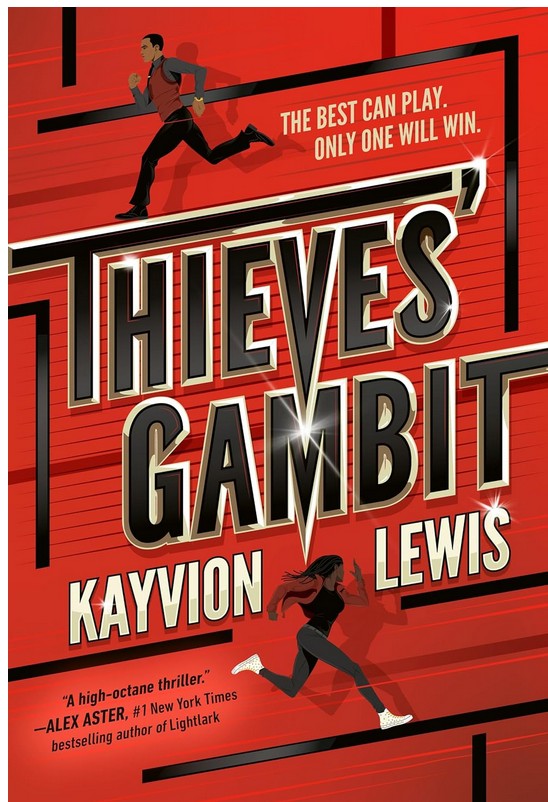
Thieves’ Gambit #1
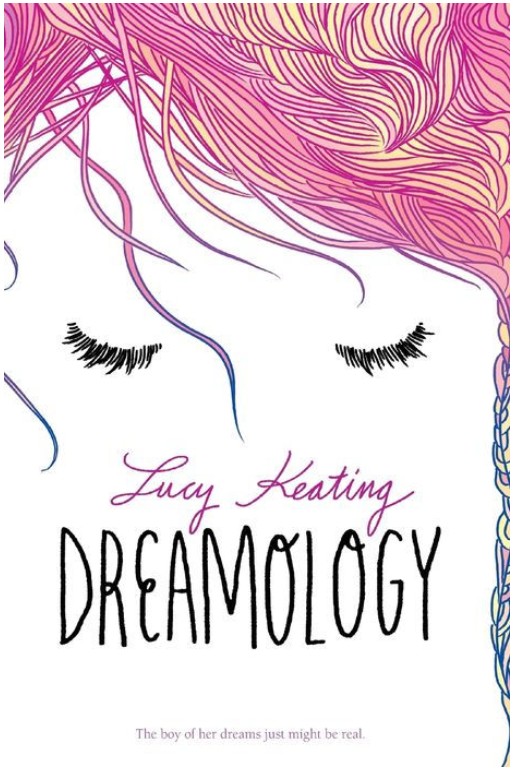
Dreamology
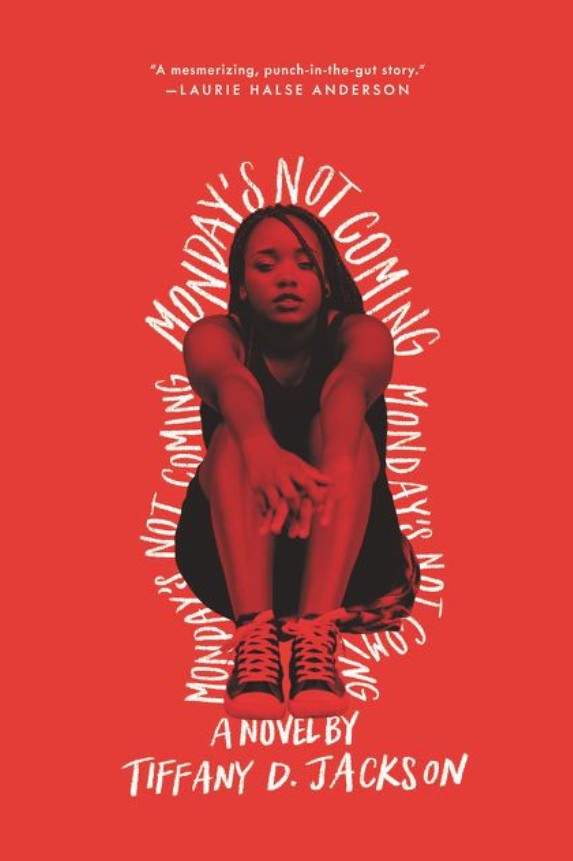
Monday’s Not Coming
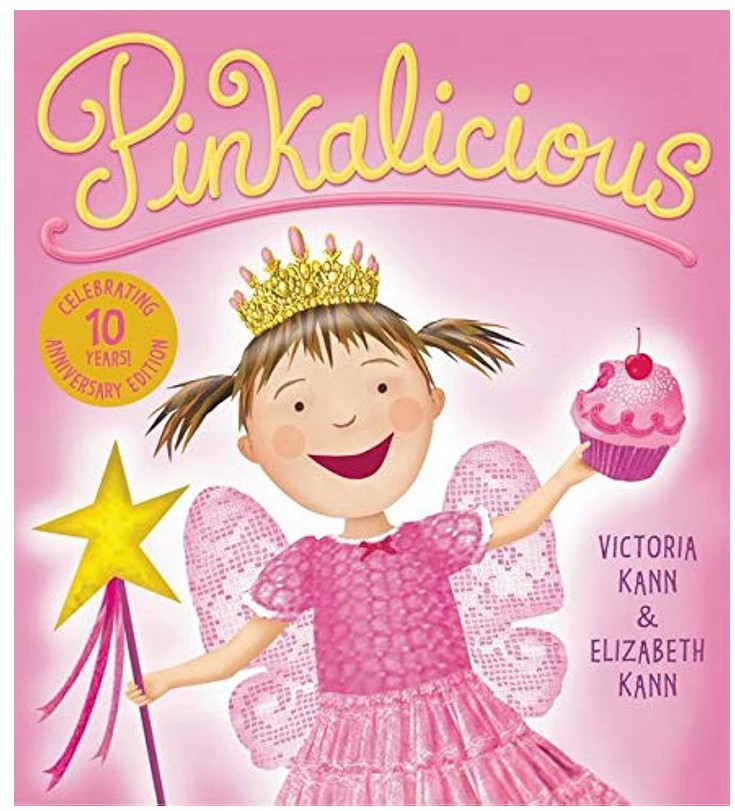
Pinkalicious

Driven

Goodbye Days

Blood of Troy

Will’s Race for Home

